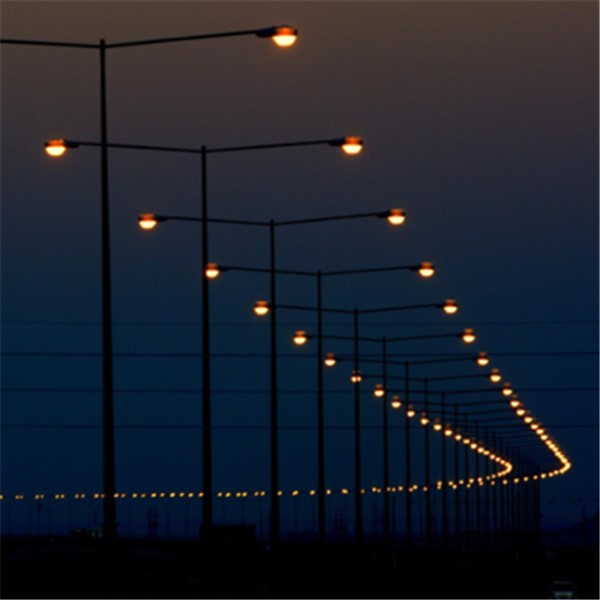Most of the street lamps we use now are split type, and the reasonable configuration is selected according to our own needs. Among them, it seems that the lamp pole that supports the light source and the battery panel has little impact. But in fact, the lamp pole is particular about its height, quality or some details. Let’s take a look at how to select the lamp pole.
1. Height requirements
The height of the lamp pole determines the illuminance of the street lamp. The selection should not be careless. The height should be determined according to the width of the road. For example, the height of the single side street lamp ≥ the width of the road, the height of the two side symmetrical street lamp = the general width of the road, and the height of the two side zigzag street lamp is at least 70% of the width of the road. Only in this way can the best lighting effect be achieved.
In addition, the traffic flow on the road should also be taken into consideration. For example, it is more appropriate to have more light poles for large trucks, and the light poles for large trucks can be lower. Of course, the high and low control should not deviate from the standard. The consequences of not being able to see clearly are still terrible.
2. Material requirements
Material is also an important standard for selecting solar street lamp poles, which will directly affect the service life of street lamps. Nowadays, the most common lamp poles are made of Q235 rolled steel. The anti-corrosion performance of this material itself can not be said to be very good, so the surface is often processed to enhance its performance.
For example, hot-dip galvanizing or cold galvanizing, compared with the two treatment methods, the anti-corrosion performance of the lamp pole after hot-dip galvanizing treatment is better. Therefore, it is recommended to select the lamp pole treated in this way when purchasing.
In addition, some street lamp covers commonly seen now include stainless steel and anodized lamp poles. The corrosion resistance of these two materials is particularly excellent, but the price is less friendly than that of steel lamp poles. You can choose according to your specific budget.
There are also cement poles, which have long service life and high strength, but they are important and inconvenient to transport. Therefore, most of the poles used are left over from the previous electric poles or street lamp poles, which are very suitable for the split type street lamps. It gives full play to its residual value and is relatively environmentally friendly.
3. Wall thickness requirements
In addition to the above two aspects as the focus of consideration, there are also some details that can not be ignored, such as the wall thickness of the lamp pole, whether the lamp pole has sufficient wind resistance and load-bearing capacity, which are closely related to them. Therefore, the wall thickness should be determined according to the specific installation scenario.
For example, the wall thickness of 2-4m street lamps should be at least 2.5cm, the wall thickness of 4-9m street lamps should be at least 4-4.5cm, and the wall thickness of 8-15m street lamps should be at least 6cm. If the area is windy all the year round, the wall thickness should be larger.
In a word, we should pay attention to all kinds of details when buying street lamps. In the early stage, we should understand all aspects of the scene of installing street lamps. In this way, we can easily determine the requirements for convenient configuration of street lamp poles and bring us the most comfortable and safe lighting effect.
Post time: Aug-16-2022


